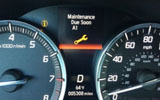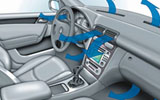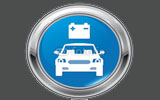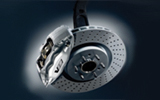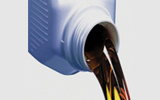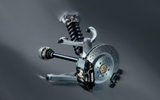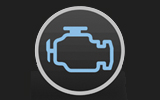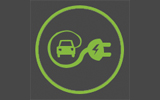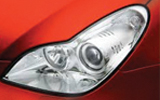Customer Tips
Tips: Even Your Car Can Get The Flu!
The Car Doctor suggests making sure “your car is healthy with a complete physical exam. Just as a cough is the signal for an on-coming cold, rough idling, hard starts, stalling or diminished power are signs of pending car trouble. A thorough inspection and analysis by a trusted professional assures that your car is running at maximum efficiency and provides insight to potential problems. Pay special attention to replacing dirty filters for air, fuel and crankcase ventilation when necessary.”
In addition to the basics, Burrows identifies critical areas that cause car owners the most headaches during winters. He advises giving special attention to:
- Oil : Oil changes should be more frequently. As temperatures varies, oil thickens and provides less efficient lubrication. Use lighter oil (5W-30 or 10W-40) or try synthetic oil, which flows better in extremely cold weather, offering more protection at start-up. For specific recommendations for your vehicle, always refer to the manufacturer’s service schedule.
- Antifreeze : Antifreeze, or “Engine Coolant” should be checked at every oil change not only for the proper level, but also for proper mixture concentration and pH level as well. The coolant must remove heat, lubricate and prevent corrosion. These tests and inspections will keep the cooling system in a good state of health for safe and reliable operation
- Battery : At 32 degrees, a vehicle’s battery may have only 50% of its summer output but the engine can require almost twice the need for starting power. Check connections to assure a tight fit. Have your auto care service provider perform a load test on your vehicle’s battery and remove corrosion from posts and cable connections.
- Hoses : Hoses should be inspected every year and changed every three. They wear from the inside out, so defects are not always visible. Squeeze to detect loss of elasticity. Look for cracked, bulging, brittle or limp hoses.
- Belts : Check overall condition and tension on the belt. Too tight a belt can ruin an alternator; too loose can result in a dead battery. Look for cracks in serpentine type belts. Five cracks per inch in a serpentine belt is a good time to replace the belt to assure reliable operation of belt driven accessories.)
- Tires : When the temperature drops so does the air pressure in tires. Improper inflation causes premature wearing which, in turn, can cause an accident. Check tire pressure when the tires are cold, not after driving. Also check for cuts, abrasions and uneven wear.
- Brakes : Road contamination and moisture can affect your braking ability. This is especially true in winter due to salt and other materials used to battle snow and ice. A thorough brake inspection, particularly of friction materials, like pads and shoes, is just what the doctor ordered.
- Heater/defroster : The heater and defroster provide warmth and comfort as well as good visibility for safe driving. A screeching sound when you turn on the heater or a stiff control lever can mean trouble so have it checked out.
- Fuel : In cold weather, keep your gas tank full. Pour a bottle of fuel stabiliser in the tank once a month to prevent moisture from freezing in the fuel line.
- Exhaust system : Have a qualified technician check your exhaust system on a lift for leaks, soft exhaust pipes, small holes in trunk and floorboards, and cracked rubber hangers or broken clamps. Failure to replace faulty components could be deadly.
- Battery : Battery to be checked every service
- Spark plugs : Spark plugs as per manufacturer reccomendation 20 000 killometeres/50 000 kilometeres or 100 000 kilometeres
” Each car, just like each person, is a little different,” Burrows notes, adding, “Learn about the needs of your own car. Everyone should begin a car preparedness inventory for each season by reading the owner’s manual.”
FUEL EFFICIENCY TIPS
In today’s world, we are all very aware that the price of gasoline is not cheap. So what can we do to offset these tremendous costs that seem to always be increasing? Well, there is a number of helpful driving and vehicle maintenance tips we would like to share that can help you put money back in your pocket.
- Avoid excessive idling : When your vehicle idles, it achieves 0 miles per Liter. Allowing it to warm up for 2 or 3 minutes is sufficient..
- Replace dirty or clogged air filters : When your air filter is clogged, your vehicle will use more fuel than it would with a clean air filter installed.
- Change your oil regularly : (That’s why you have us!).
- Keep your tires inflated to the proper pressure : Over-inflation can cause unnecessary tire wear and under-inflation can cause you to use more fuel.
- Avoid starting and stopping : Driving aggressively can have a tremendous impact on your vehicle’s fuel consumption.
- Observe the speed limit : You will notice your fuel mileage decrease dramatically above 120 km/hour.
- Don’t haul items that you do not need in your vehicle. Extra unneeded weight can decrease your fuel mileage.
- Check your gas cap periodically. Loose, damaged, or missing gas caps will allow your vehicle’s fuel to vaporize into the air.
TRAVEL TIPS
While it may seem that most people these days would prefer to avoid driving when they travel, that is actually not the case. More people are taking to the roads than ever before. For anybody planning on traveling the open roads, we have some advice that will help make your trip more safe and enjoyable.
- Give your vehicle an interior overhaul before you take to the roads : You want to be comfortable on your trip and any unwanted candy wrappers or odors detract from that before you have even left your driveway.
- Plan for the unexpected : Traveling is often filled with many events that can be considered unforeseeable. Accidents, roadwork, and your children needing bathroom breaks are just a few examples. It’s always good to give yourself some extra time in the event that anything unexpected may occur.
- Secure any luggage or personal items before departure: It’s never fun to be the person on the side of the road watching all of his or her belongings getting destroyed by moving traffic. For starters, this is a dangerous scenario for fellow motorists. Not to mention the fact that now you will be racking up a serious bill at the mall purchasing new personal possessions.
- Have all of your documentation accessible : This includes your vehicle’s registration, your insurance card, and driver’s license. The ideal situation is obviously to avoid being pulled over, but you never know when you might get caught in a speed trap. In this case, better safe than sorry.
- Join a roadside rescue service : You never anticipate being stranded on the side of the road in the middle of nowhere, but sometimes things don’t always play out the way you expect. If you are one of those people who are always on the road, it can never hurt to have a backup plan in the case of an unfortunate event.

